As we come to the end of the year, we thought we would share something a little different for our final newsletter of 2022.
Back in November, our co-founder Manon Verchot was asked to join a panel at the Science Journalism Forum called ‘New Age Media: Adjusting to Changing Demands of Audiences.’ The panel was moderated by Archita Bhatta, and included Sandhya Sekar, Program Manager at Mongabay India and Saugat Bolakhe, a freelance science writer.
Through the panel, we had a chance to present some ideas on how visual journalism has been altered by digital media, as well as our thoughts on the growing concerns about tools like artificial intelligence replacing journalists.
We decided to share the presentation in this newsletter as a sort of reflection on the last few years, and a look at upcoming trends in visual journalism. And because the In Old News-letter is about tools and resources for journalists, we’re also including some notes on how we put together the presentation. This is what our notes will look like:
We'll be sprinkling in some notes about how we made the decision to include certain examples or visuals in the presentation. Note: For brevity, we decided not to include every slide Manon used during the presentation. Here goes:
Visual Journalism in a Digital World
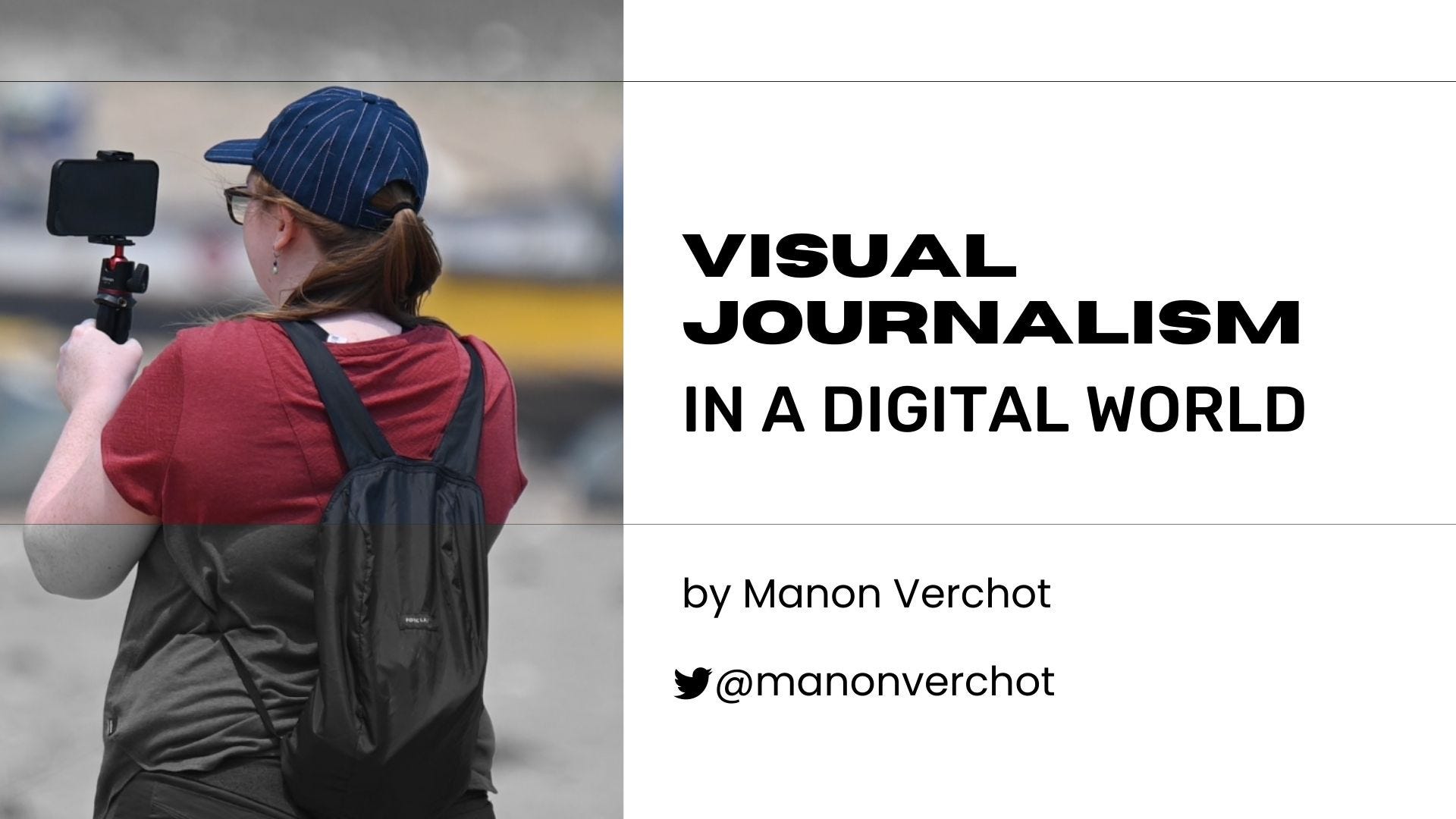
“For today’s discussion, I’d like to talk about some of the digital tools that have changed the way we create and consume visual media, like video and photography.
The examples I’ll be sharing are by no means an exhaustive summary. But I’d like to share my perspective on how I see all of them fitting together.”
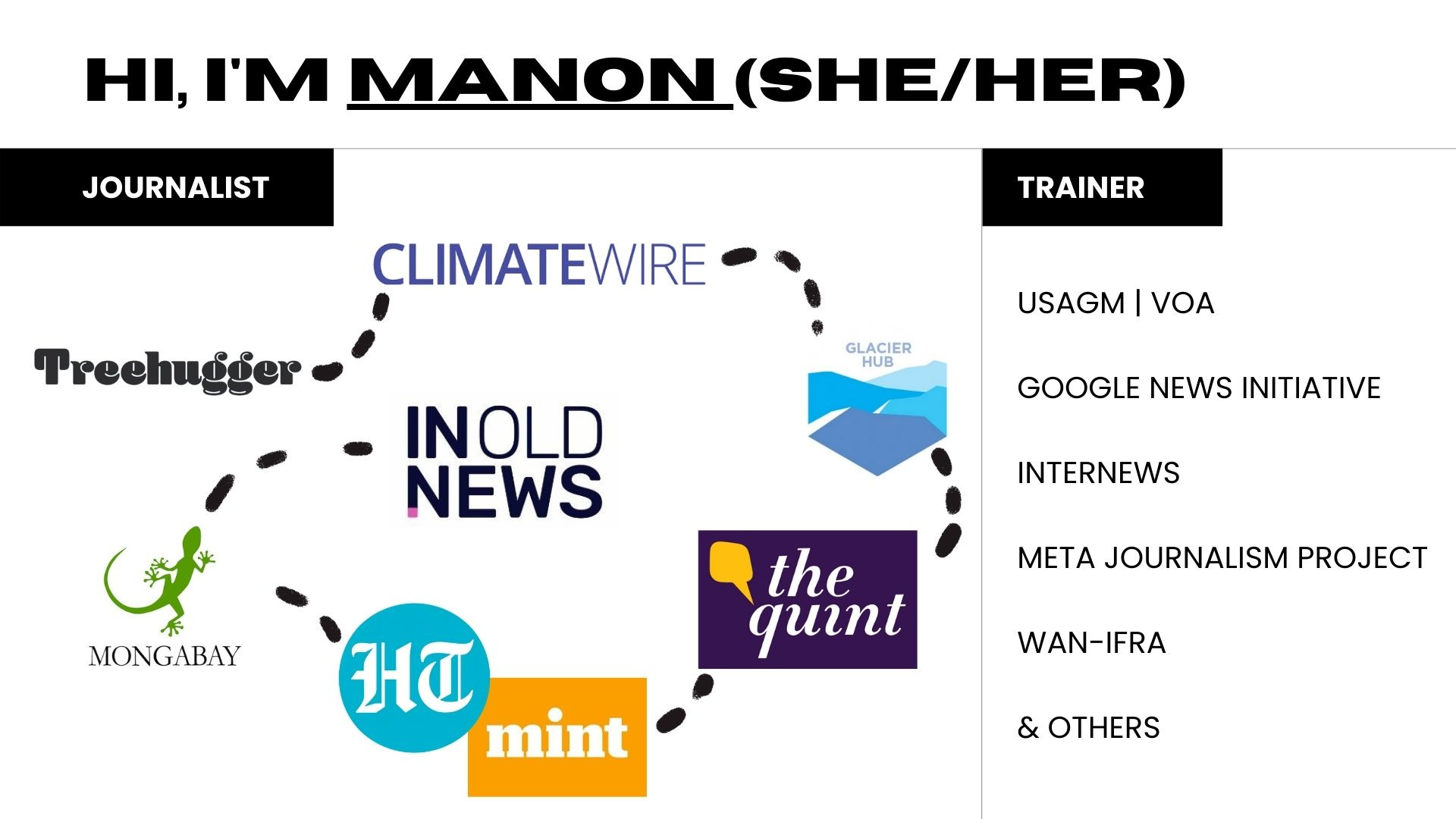
Manon decided to illustrate her experience in the journalism space as a path instead of a straight line. “I’m what some might refer to as a digital native, my first job in journalism was at an online-only publication called Treehugger. Since then, I have headed multimedia and video operations at publications like Mongabay as well as at Hindustan Times, India’s second largest newspaper and Mint, one of India’s leading business papers.
And now, I have co-founded my own company, In Old News, that provides trainings and production support for journalists interested in learning audio, video or other forms of media beyond writing.”
We modify our bio and how we introduce ourselves based on the audience for the talk or training. We want to establish early on what they can expect from our experience in the industry. 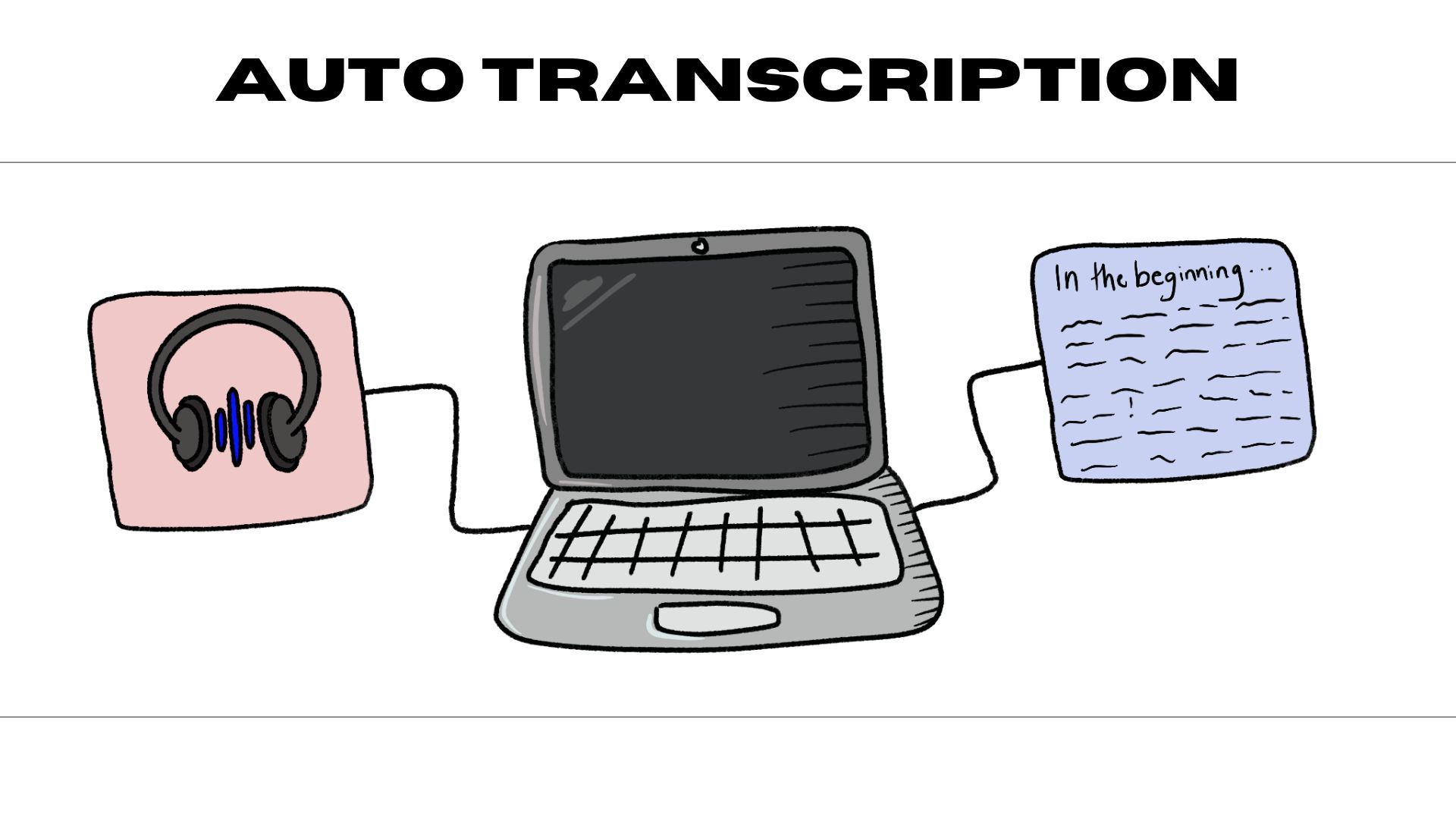
“If you work with video, like me, the idea of having to spend hours transcribing a long interview meticulously can be in the back of your mind when you’re in the middle of interviewing someone.
So the rapid improvement in automated transcription tech and the availability of many auto-transcription tools has come as a huge relief. We have a burnout problem in our industry. And tasks like transcription are one of the most tedious and time-consuming tasks, but they can be done in minutes by a computer.”
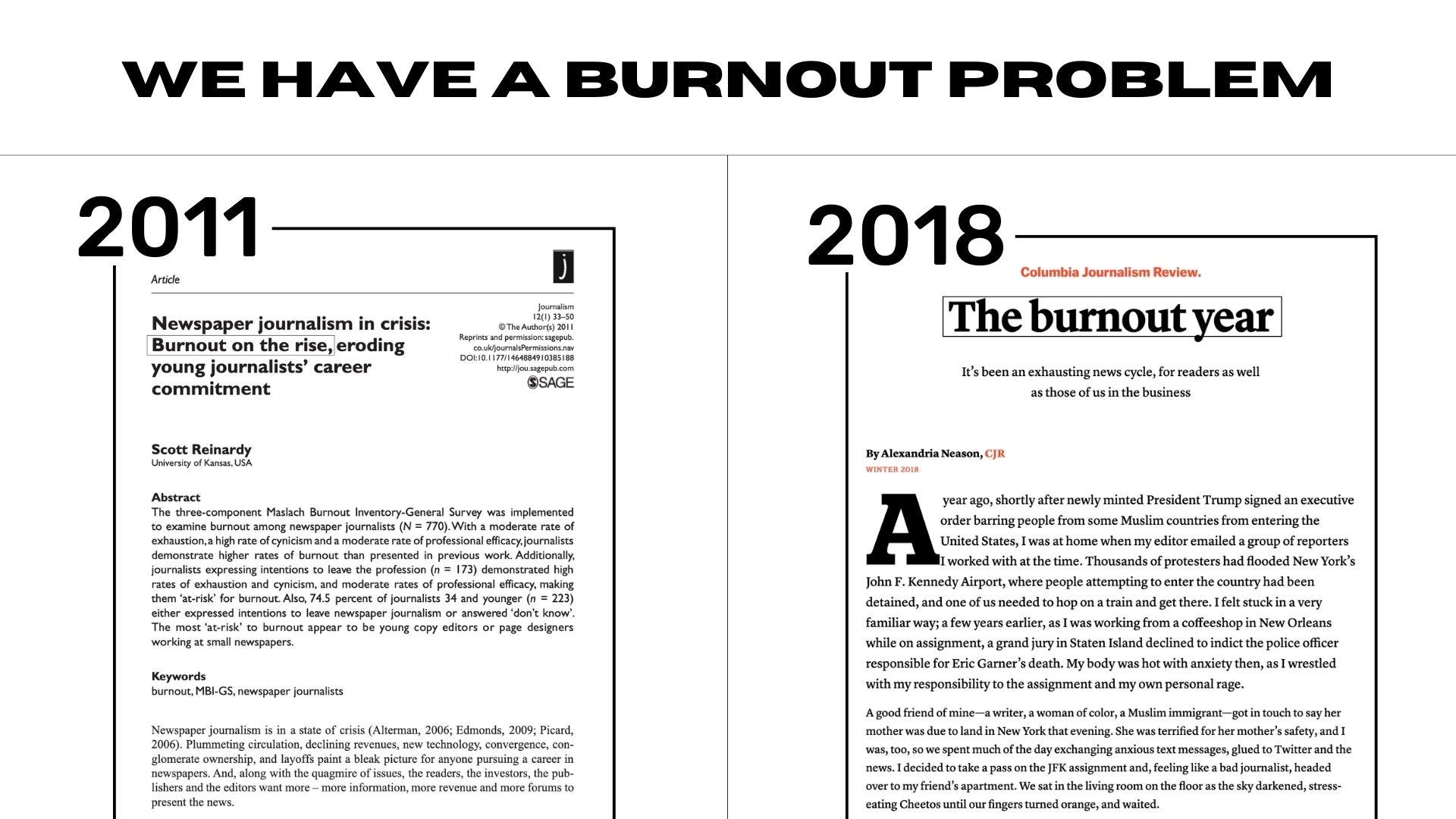
We know that burnout is something many journalists can relate to, and so we thought it would be useful to focus the first part of our presentation on tools that can make our jobs a little easier. We also wanted to emphasise that burnout is a serious issue in the industry, so to back up our claim, we pulled up a couple of studies to include in our presentation slides. This also serves as a gateway to the topic of artificial intelligence to people who may not be very familiar with its various use-cases. “I don’t think it should be under-estimated how much auto-transcription has freed up time for journalists. When we don’t have to spend as much time on tedious tasks, the possibilities for how we can make use of that extra time are endless.
Of course, that’s not to say that auto-transcription is perfect. It often struggles with accents because the computers haven’t been trained on a diverse enough sample set. And it’s not available in many languages. It also struggles with audio recordings that have some sort of interference, like background noise.
So we still need humans to go through transcriptions once a computer has finished its job for accuracy and intent. The example I have up on screen is from an interview we did for our newsletter.”
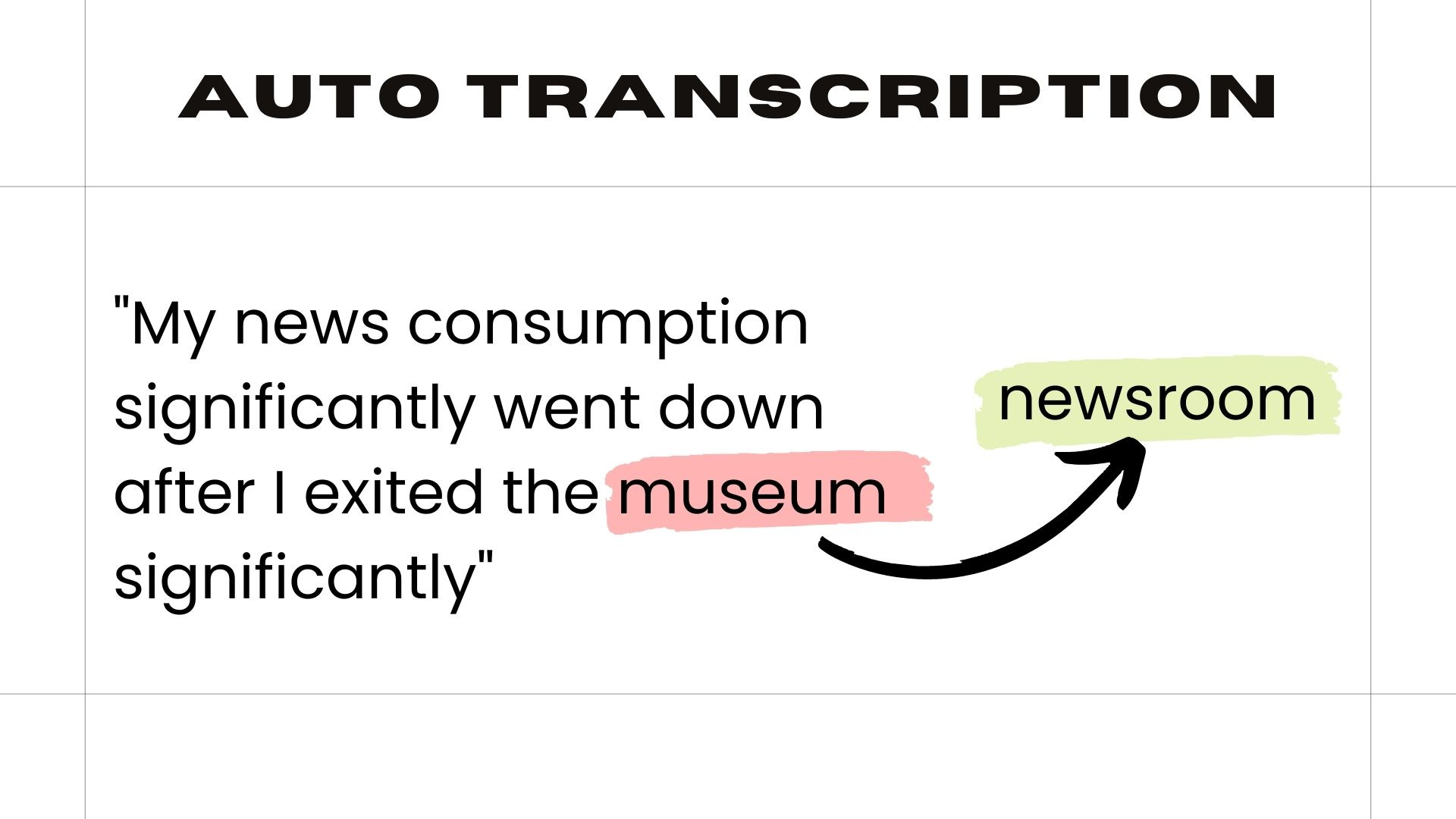
We wanted to illustrate on the kinds of errors that we have faced while using these tools, so we highlighted the word that the transcription service got wrong in red, and what was actually said in green. “The service we were using, Otter.ai, heard “museum” rather than “newsroom.” And I’m glad we caught that before hitting publish. The good news is that I think that we can expect auto-transcription to improve in the coming years, because it’s a requirement for so many people, so errors like these could become less frequent.”
When covering new tech and its possibilities, it's also important to acknowledge the limitations when it comes to real-world scenarios. Auto-transcription isn't the holy grail, but that doesn't mean its impact on journalism isn't significant. “Automated subtitling has improved significantly in just the last five years. Video editors know how tedious and time consuming it can be to go line by line and time each subtitle. Especially in videos that are longer than 5 minutes. But now, there are tools that allow us to drop in a transcript, and the software will do all the timing for us.”

This slide shows how auto-subtitles show up on YouTube.“One of my favourites (because it’s free and pretty accurate) is YouTube Studio’s subtitling feature. Just like auto-transcription, it’s not perfect and needs a human to look it over. But I think the fact that subtitling has become faster and easier is super important. Because subtitles are an important way to make our videos more accessible to people who are deaf or hard of hearing.
Similarly, the improvement of screen readers since their invention in the 1980s means that our articles are more accessible for people who are blind or hard of sight or who find it easier to listen than read. For those of you interested in learning more about how to make your website more accessible, Vox has checklists for engineers, designers and editorial teams.”
For each of our examples, we wanted to make it easier for the audience to find additional resources. That's why we include links they can visit or keywords they can search for. 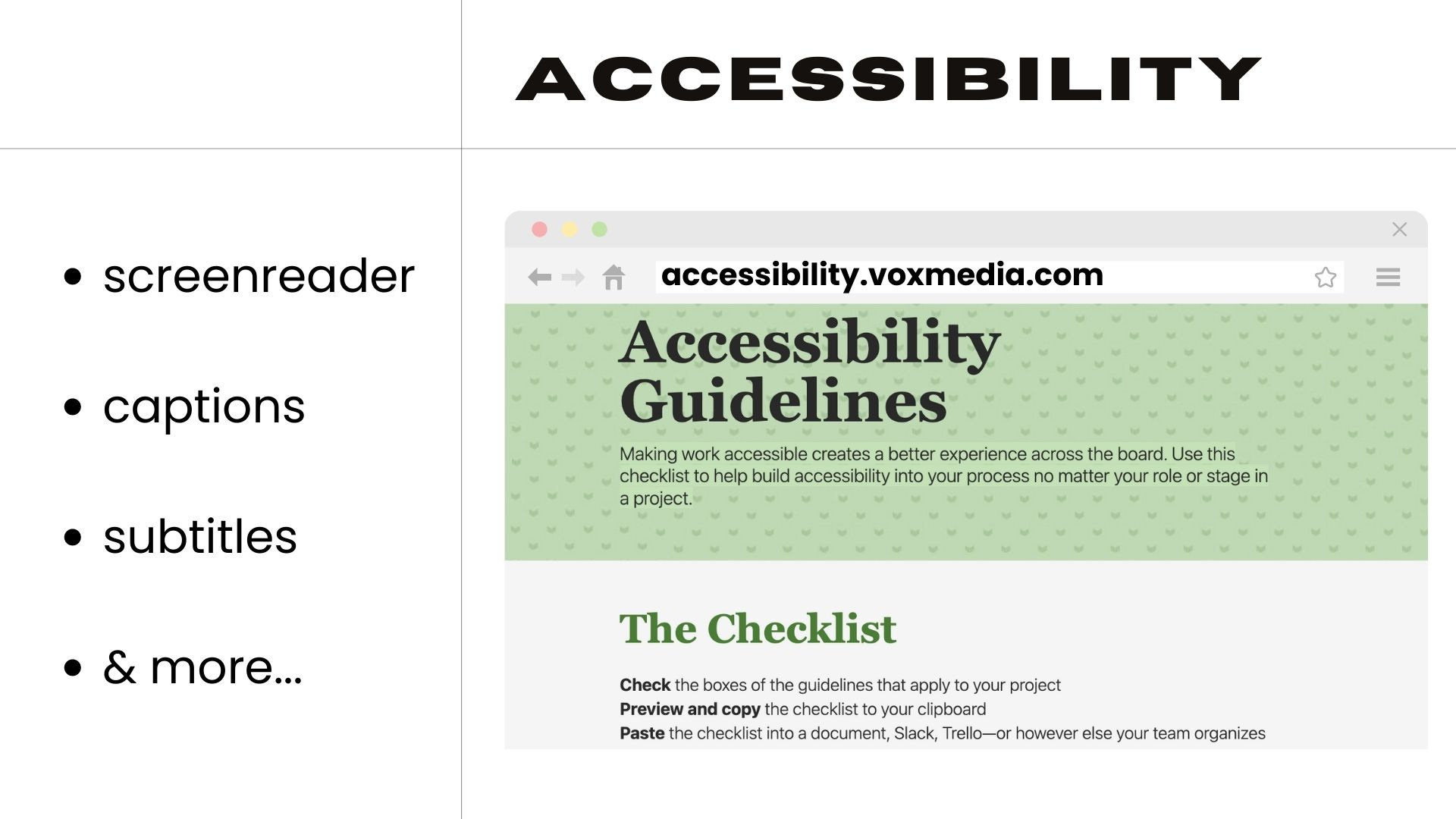
“Access to tools for editing videos and podcasts has also gotten a lot easier. A couple of decades ago, it was extremely expensive to work in broadcasting. Cameras and editing software cost hundreds, in some cases thousands, of dollars. And learning video skills also came at a cost. It can still be expensive to do video now. But it’s also possible to make really good videos using just a phone that costs less than $200. There are free apps and thousands of free tutorials. That means that video is no longer an exclusive skill. It’s accessible to more journalists, which also improves representation in media, so that we’re hearing from more perspectives than ever.
So when I look at all the improvements in speed and availability of tools, it makes me wonder what we can do with the extra time these tools free up? Maybe it means we can finally get to the passion project that’s been on the back burner. Or explore how new tools, like images created by artificial intelligence fit into our work. Semafor, a new publication, uses AI images in their videos when they don’t have the related footage.“

“Their first video was about an accident at SpaceX, and they used AI Imagery to recreate what the incident may have looked like. In other cases, AI Images can be used in addition to some of the tired stock images that we’ve been forced to turn to for so long.
That doesn’t mean that we can leave it all to AI. Because AI does get a lot wrong. Here’s an example. We did a newsletter about Artificial Intelligence and we got AI to write a portion of it. You can see here that the first few sentences are just fine. But then it came up with something weird…”
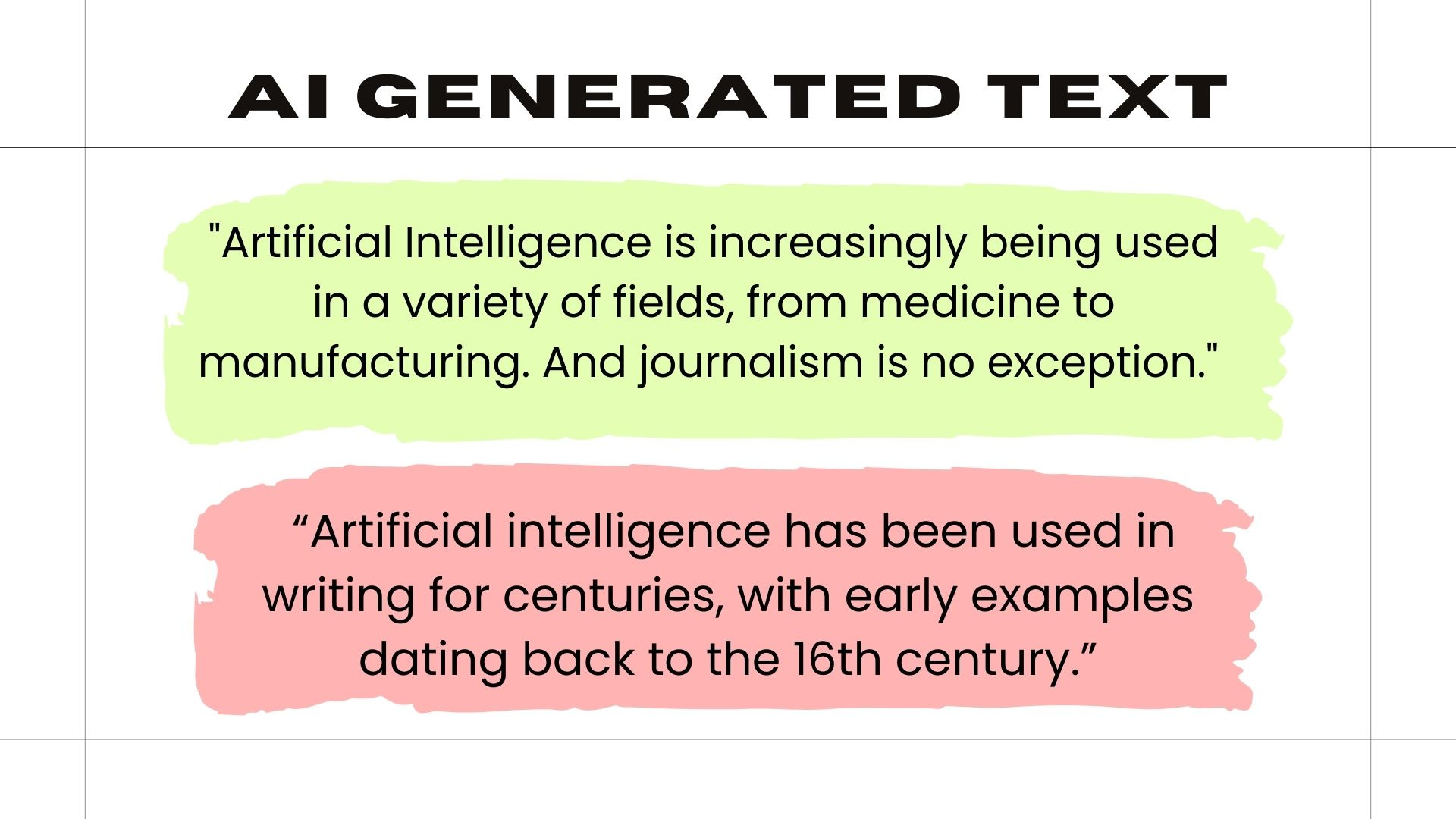
Once again, we wanted to emphasise what AI gets right and what it gets wrong, so we put it in a slide so the audience could see for themselves. “It wrote “Artificial intelligence has been used in writing for centuries, with early examples dating back to the 16th century.” Which is, of course, impossible. We didn’t have computers back then. So as you can see, even when AI puts something together for us, we still need to fact check its work.
So I don’t believe that digital tools will make journalists redundant. At best, they can be used in ways that improve our processes. And make our work more accessible to more people. But for real creativity and storytelling, we still need human intervention.”
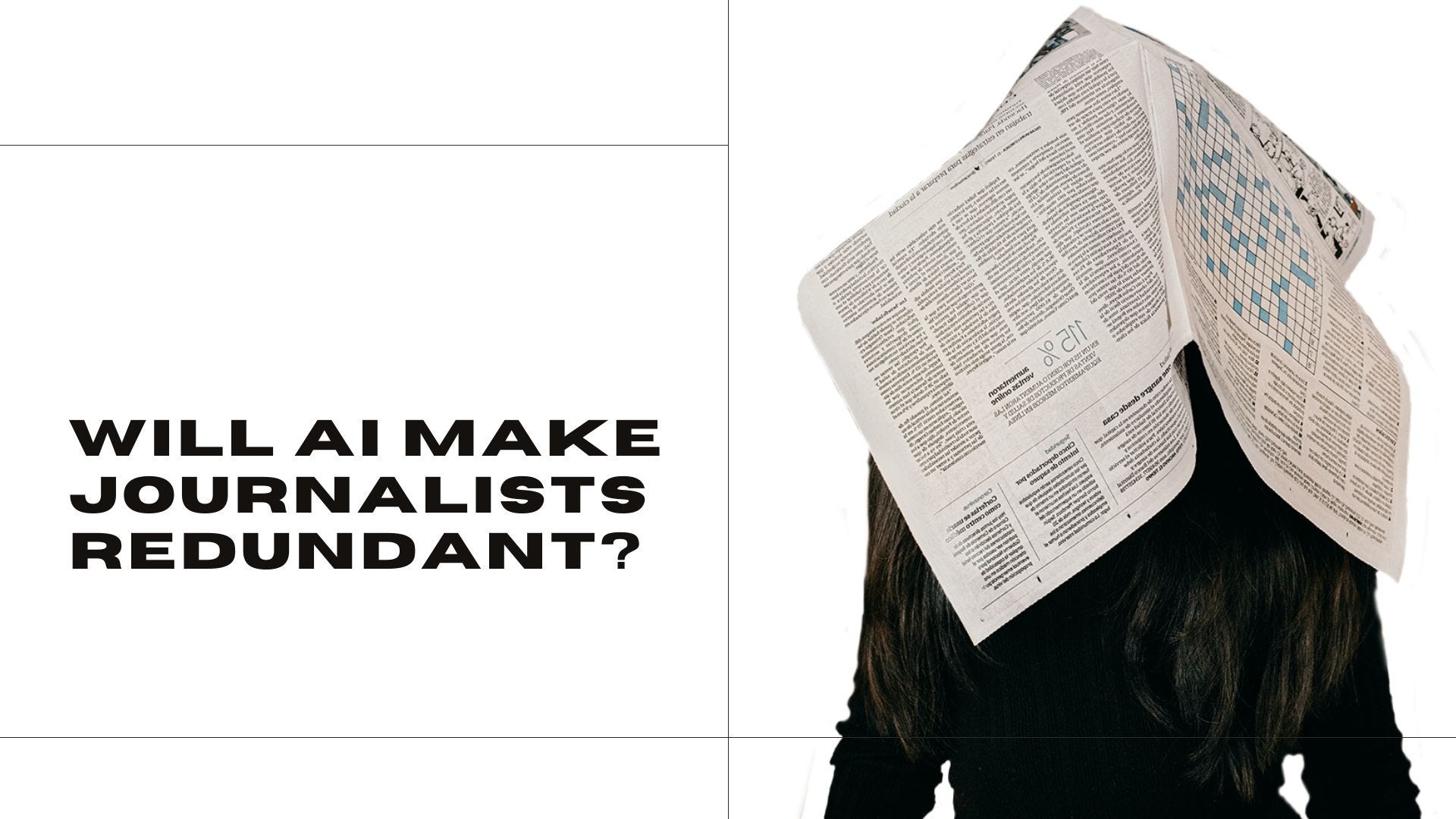
“And there are legitimate concerns that in this digital era, journalists are now forced to do it all. They have to be writers, and podcasters and social media influencers and videographers and video-editors all on their own. When journalists are overworked, it can take out the joy and creativity from our work. And it can make it easier for errors to slip through the cracks. These are things that newsrooms have to be cautious about. But until we develop an AI that can help us strike a better work-life balance, we’ll have to figure it out on our own.
Thank you.”
A few additional notes on our process
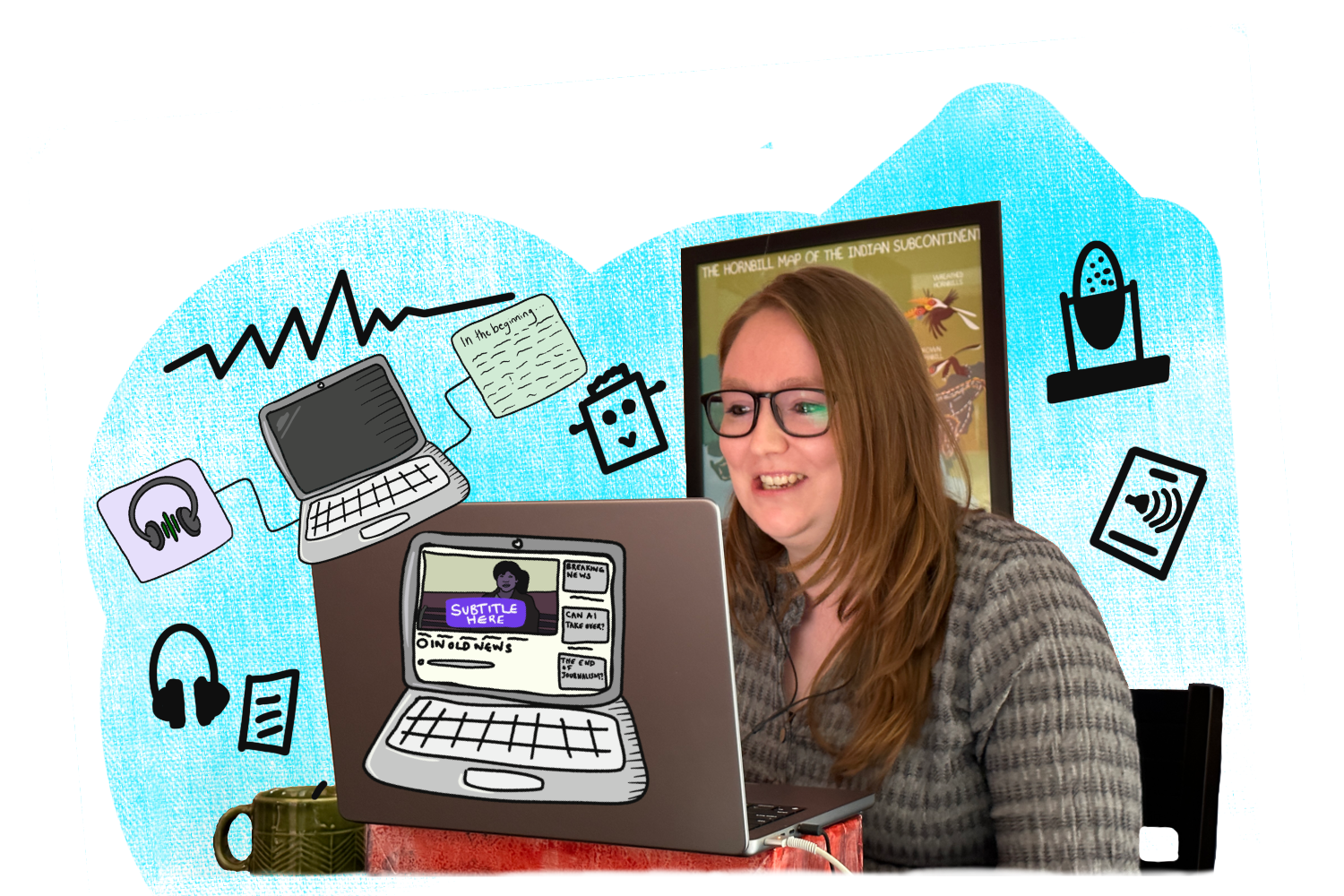
When we’re preparing a talk, we often like to script our presentations beforehand, because it helps us collect our thoughts and make sure that we don’t go over the allotted time. For the Science Journalism Forum panel, Manon had about 8 minutes to speak, and she knows that she usually speaks at a rate of around 140 words per minute. She prepared a script of around 1,000 to 1,200 words long. Though Manon uses a script to guide her, she leaves some room to go off-script to make space for new ideas that might come up during the actual presentation.As she was scripting, she thought about which visuals would help the audience visualise what she was talking about. We try not to add too much text in our slides (the key word being try because sometimes it is about text), so that people can focus on what we’re saying instead of trying to read everything on the slide before we jump to the next one. We also think very carefully about who our audience is. Because we were speaking at a journalism forum, we felt that we could expect our audience to appreciate how helpful tools like transcription could be. If we were talking to an audience that was more general, we likely would have expanded on how time consuming transcription is in journalists’ daily lives. We hope this breakdown was useful. In the new year we’ll be bringing you more stories of journalism from all over the world. Thank you for joining us on this journey and see you in 2023.

